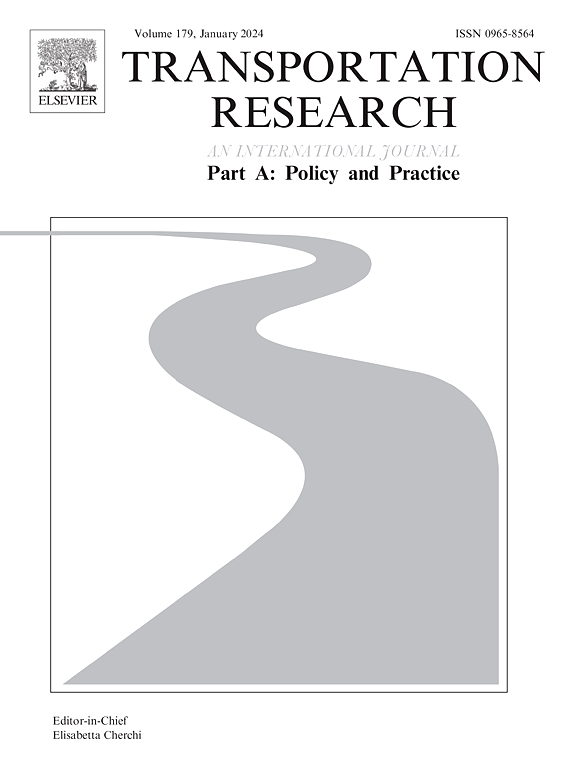Urban agglomeration policy and coordinated road infrastructure development
IF 6.3
1区 工程技术
Q1 ECONOMICS
Transportation Research Part A-Policy and Practice
Pub Date : 2025-03-10
DOI:10.1016/j.tra.2025.104433
引用次数: 0
Abstract
Fostering seamless mobility across administrative borders by coordinating road networks is a key objective of transportation infrastructure development. China’s Urban Agglomeration Policy (UAP) is an important practice in this realm, yet empirical evidence on its effects remains limited. This study addresses this gap by utilizing station-level traffic flow data to create a new traffic flow disparities indicator and employing a staggered Difference-in-Differences strategy for the period 2010 to 2017. The findings reveal that the UAP significantly reduced traffic flow disparities between adjacent cities, with improved coordinated road infrastructure development serving as the driving mechanism. The UAP narrowed disparities in road length (quantity) between interprovincial adjacent cities, promoted the coordinated development of road quantity and technical standards (quality) among intraprovincial adjacent cities, and enhanced cross-border road infrastructure connectivity, enabling less-developed cities to catch up with their more developed counterparts. The effects are more pronounced in areas with initially larger disparities, particularly among interprovincial adjacent cities compared to intraprovincial ones, and on highways compared to ordinary national roads. These findings underscore the importance of strategic transportation infrastructure planning in promoting coordinated road infrastructure development and mitigating regional traffic flow disparities.
求助全文
约1分钟内获得全文
求助全文
来源期刊
CiteScore
13.20
自引率
7.80%
发文量
257
审稿时长
9.8 months
期刊介绍:
Transportation Research: Part A contains papers of general interest in all passenger and freight transportation modes: policy analysis, formulation and evaluation; planning; interaction with the political, socioeconomic and physical environment; design, management and evaluation of transportation systems. Topics are approached from any discipline or perspective: economics, engineering, sociology, psychology, etc. Case studies, survey and expository papers are included, as are articles which contribute to unification of the field, or to an understanding of the comparative aspects of different systems. Papers which assess the scope for technological innovation within a social or political framework are also published. The journal is international, and places equal emphasis on the problems of industrialized and non-industrialized regions.
Part A''s aims and scope are complementary to Transportation Research Part B: Methodological, Part C: Emerging Technologies and Part D: Transport and Environment. Part E: Logistics and Transportation Review. Part F: Traffic Psychology and Behaviour. The complete set forms the most cohesive and comprehensive reference of current research in transportation science.

 求助内容:
求助内容: 应助结果提醒方式:
应助结果提醒方式:


